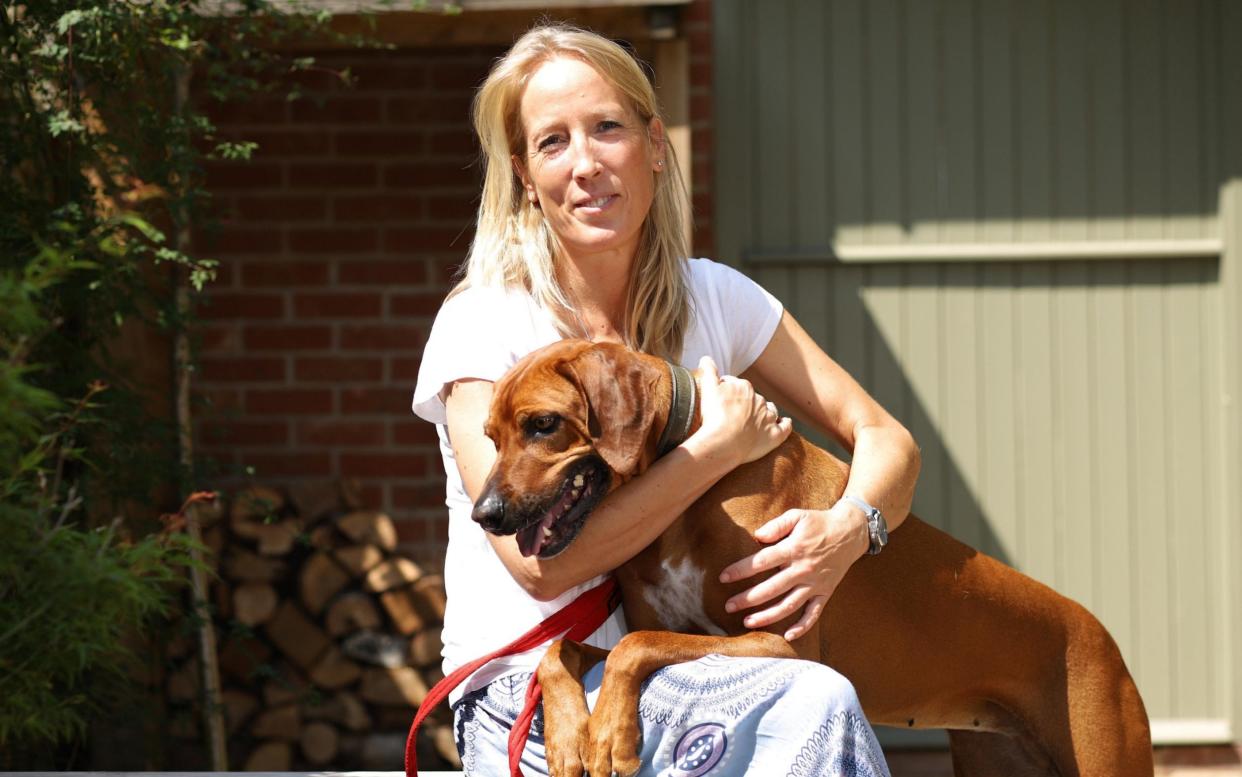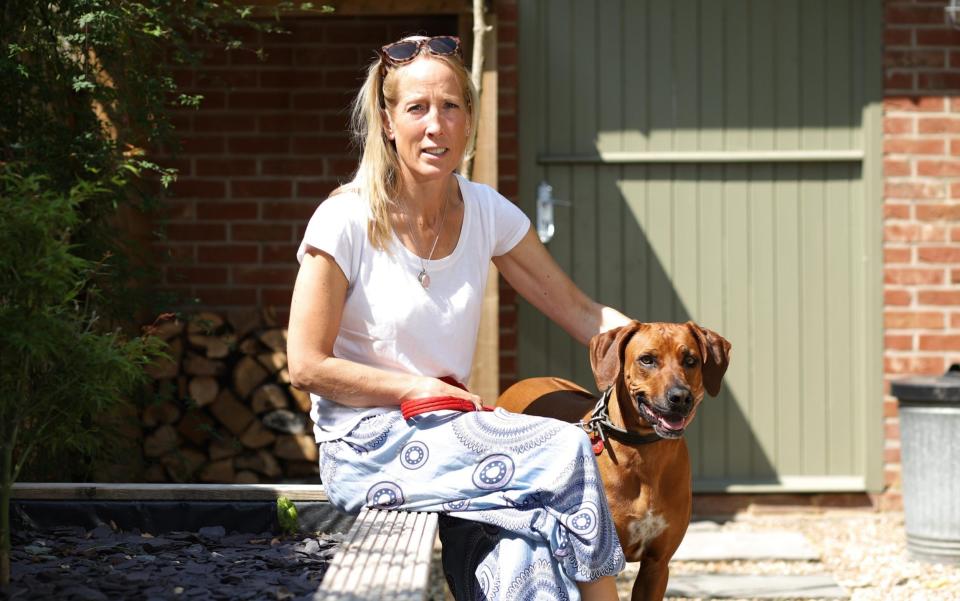Why you need to stop touching my dog without asking

We all think our animals and children are attractive; fact. But my dog, a five-year-old Rhodesian Ridgeback called Thala, is a particularly fine specimen and commands huge swathes of (often unwanted) attention wherever we go.
With her intense, yellow eyes and distinctive strip of hair growing the wrong way down the length of her back, Thala is some kind of celebrity when we’re out. Often without asking me first, folk think nothing of trying to stroke her whether I’m eating, talking or walking with a friend — or even once getting cash out of a bank machine.
This great, animal-loving country seem to view dogs as public property, and it is an irritating part dog ownership I have had to accept. Until Covid-19. Due to an auto-immune disease, in March I was one of millions classed as clinically extremely vulnerable. While this was downgraded to “moderate” by mid-April, I must still remain careful as I’m locked down with my parents, both of whom are over 70.
During March and April, walking Thala was for the first time a pleasure as people kept their distance, but on 11 May when we were allowed to spend more time outside, things changed. As people relaxed against the invisible enemy, the dog petting resumed.
Since then I’ve been labelled “miserable”, “unhappy” and a few less choice words, for asking others to leave Thala alone. She’s a big, powerful hound and needs to run, but now I barely leave the house with her if we might encounter others and if so, she’s on a tight leash.

During the rest of my daily life — the rare supermarket visit or distanced walks with friends — I can control my own risk. But if people pet my dog, I can’t. Petting someone else’s dog is like petting their child — so why is it OK? Thala’s coat is no different to any other surface, like a door handle or supermarket trolley, a potential source of person-to-person transmission.
The worst point came three weeks ago, when I was isolating at my own home in Hampshire after attending the funeral of a friend who died from Covid. A funeral is a sobering affair at the best of times, let alone a socially distanced funeral when the deceased was taken by this awful virus. It concentrates the mind, leaving you hypervigilant.
So when I asked a family in the New Forest if they would please not touch my dog, and received a torrent of abuse in return, I hadn’t the energy to tell them that it could be for their own good. If I had picked up Covid from the funeral, the hair on my dog’s back could pass it to them.
I’m not alone in my anxiety. Friends Chris and Laura Ford and their two children and yellow Labrador Goose live in a cottage on a farm where a footpath runs straight past their door.
“Walkers passing by felt they could cuddle him, it really started to annoy us — I’ve never been sure why people see dogs as public property. Having a friendly dog that my kids cuddle then puts my kids and anyone they come into contact with at risk, too,” said Chris, who sadly lost his father to Covid-19 in early April.
“It got so bad the boys made a coat that read ‘Do Not Touch’ for Goose, which did seem to help.” The risk of transmission on a dog’s hair might not be the end of it. Scientists at University College London (UCL) are calling for more research into which animals can pass SARS-CoV-2 onto humans, a subject more closely in focus after it emerged last week that a dog on a farm with Covid-infected mink Denmark tested positive — despite showing no symptoms.

We know two dogs in Hong Kong tested positive and that Covid-positive dog in the US has died — where lions and tigers in a New York zoo also had it. Cats are even more of a potential threat; thousands of Covid-positive mink in the Netherlands are currently being culled on 10 farms where a “significant” number of cats were found to be infected.
In response, the US Center for Disease Control and Prevention (CDC) last week updated its guidance on pets, acknowledging that dogs as well as cats and “a few other” animals can be infected. The CDC says there is no evidence that animals play a significant role in spreading the virus, but acknowledges: “It appears that [Covid-19] can spread from people to animals.”
The World Organisation for Animal Health clearly states: “Cats, mink and dogs have tested positive for SARS-CoV-2 […] following contact with humans known or suspected to be infected with SARS-CoV-2”, but acknowledges that the Covid-19 pandemic is driven by human-to-human transmission.
This is something with which Joanne Santini, Professor of Microbiology at University College London (UCL), concurs. In a paper published in The Lancet Microbe last week, Santini and her colleague Prof Sarah Edwards called for urgent research to establish which animals could pass SARS-CoV-2 onto humans and vice-versa.
“That pets might transmit this is a major problem if you’re isolating,” said Prof Santini. “The government needs to be checking what animals are at risk. We’re missing bits of the jigsaw puzzle and it’s dangerous to pretend it isn’t happening – we need to be proactive and be checking.” The real spread among humans is with asymptomatic cases, and the same could be true of domestic pets.
“Just because there’s no real evidence [that pets can infect humans], it doesn’t mean it doesn’t happen,” she added.

Like the Kennel Club, the UCL researchers advise that until we know for sure, it’s best to keep cats indoors and walk dogs on leads.
A Defra spokesman told me that while the Government is aware of reports of SARS-CoV-2 being detected in a “small number of animals outside of the UK”, there is “no confirmed evidence that pets or other domestic animals are involved in the transmission to humans” – but it will closely monitor this situation.
The Kennel Club was a little more sympathetic to my plight. Bill Lambert, head of health and welfare said, despite any lack of evidence, as lockdown eases further, unwanted fuss for my four-legged friend will only increase.
“While we’re all trying to avoid getting too close to other people, it’s best to avoid stroking other people’s dogs,” he stressed. “This is difficult to enforce as an owner, so if you’re not sure how to broach this, ensure your dog will come straight back to you when called, and keep them on a lead when you can’t avoid being closer to others.”
In my own battle for biosecurity (and personal space), I’ve considered muzzling her — if a dog looks aggressive, people back off — but can’t bear to as it would upset her. If I get really desperate I plan to start wearing a “shielding” sign myself, but for now I am taking advantage of long, light days and walking at anti-social times in places where I know we won’t see other people. If someone does touch her, I wipe her down with disinfectant or bath her, and wash my own hands.
But when pub gardens start to open, lockdown will continue for Thala. For the first time in her life, she will just have to stay at home.


